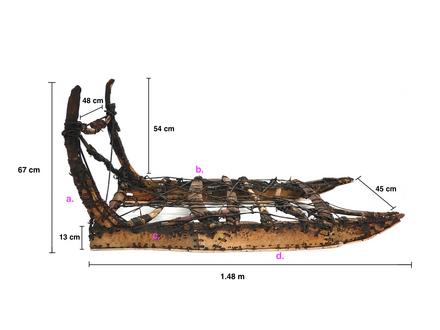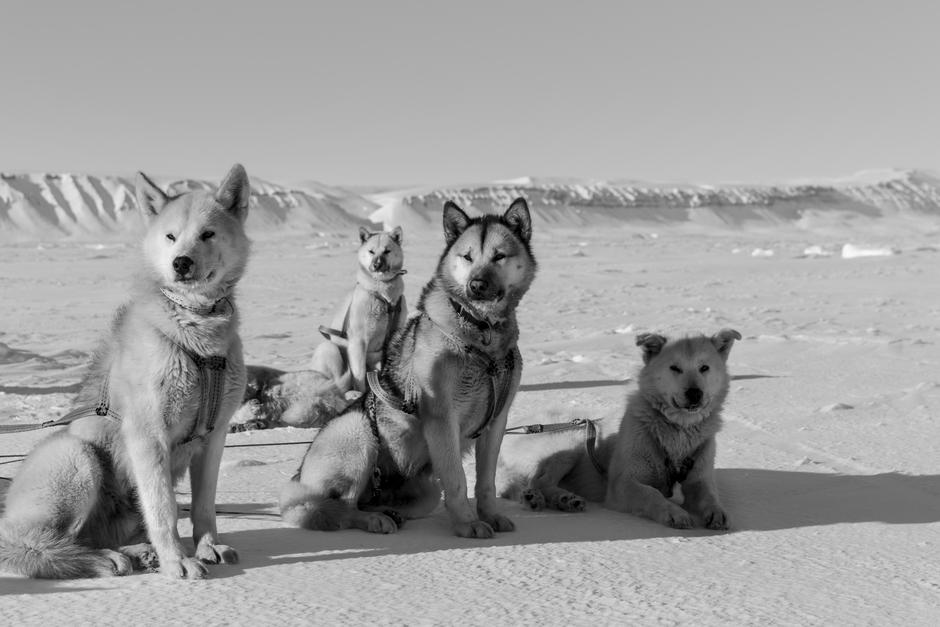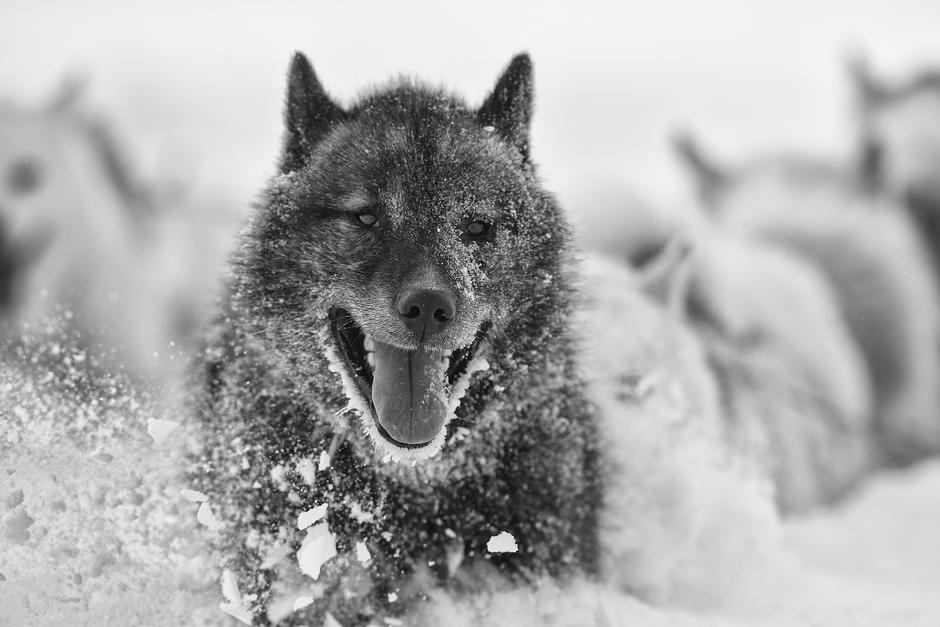
The Dog Sled
The construction of sleds reflects a complex balance between tradition, available materials, local terrain and climate. These conditions have led to distinct regional differences in sled design.

Archaeology of the Dog Sled
Archaeological findings have shown that the Thule culture, the Dorset culture, and the Saqqaq culture all had dogs with them during their migrations to Greenland.
The Greenlandic Sled Dog
Greenlandic Sled dogs possess a thick coat of fur perfectly adapted to the cold climate. A fully grown male can reach 60 cm in height, weigh 30–40 kilograms, and typically lives for 9–11 years. The Greenland sled dog is related to the Siberian Husky and Alaskan Malamute, and these breeds are collectively known as "Spitz breeds" due to their characteristic pointed snouts and heads.
Sled dogs are domesticated and raised for various purposes. Raising dogs and dog sledding is an ancient Inuit tradition passed down orally, incorporating specialized knowledge essential for survival. Sled dogs typically have a permanent owner and remain outdoors year-round. Before the 1950s, dogs were free-ranging, regardless of age. However, a law introduced in August 1956 at the National Council meeting in Greenland required that all dogs to be tied up.

The photo was taken by Eli Olsen. It is from Ittoqqortoormiit, March.
Today, sled dogs are chained with a collar beginning at 5-6 months. Sled dogs usually give birth in April, May, June, September, and October, when the weather is milder, which places less stress on newborn puppies. In summer, drivers may take their sled dogs to an island where they can run free for several months, feeding them regularly and collecting them before the sledding season. Snow and sea ice are crucial for dog sledding, impacting both the dogs' paws and the sleds themselves.
The new driving season in Greenland typically begins quietly in October and November with the first snowfall and sea ice. Dogs are gradually trained, starting with short trips, slowly progressing to longer distances and heavier loads. The sled dog driving season usually concludes when snow and sea ice melt, which is typically in May in West Greenland.

Ittoqqortoormiit, march.
For pulling sleds, dogs are fitted with custom-made harnesses attached to the front of the sled which allows the dogs to distribute the weight, enabling them to pull over long distances, often hundreds of kilometers. According to sled dog owner Jonas Kristensen, treating dogs with respect and developing a mutual understanding is vital. A driver’s ability to interpret the sled dogs' instinctive understanding of climatic conditions, ensures they are not forced onto unsafe sea ice, trusting they will find a safe path to their destination.
Thousands of years of breeding by humans has resulted in the Greenlandic sled dogs becoming adapted to a diet that is high in fats and low in starches, in addition to exercise related adaptations in response to temperature regulation and oxygen levels, read more about the research of the Qimmeq Project here.
Currently, approximately 10,000 Greenlandic sled dogs are distributed across 50 settlements (from Sisimiut northwards and along on the East coast). These dogs are used for both commercial and leisure purposes. Genetically, Greenlandic sled dogs can be categorized into three regions: West Greenlandic, Northwest Greenlandic, and Southeast Greenlandic. A fourth population disappeared along with the Inuit in Northeast Greenland during the nineteenth century. Each of the four regions of Greenlandic sled dogs experienced their own unique histories, including changes to the population size through cultural changes and diseases.
New genetic research has traced the history of the Greenlandic sled dogs into Greenland. They discovered two migrations of dogs likely with the Inuit into Greenland approximately 1.000 years ago, read more about the Qimmeq Project here.